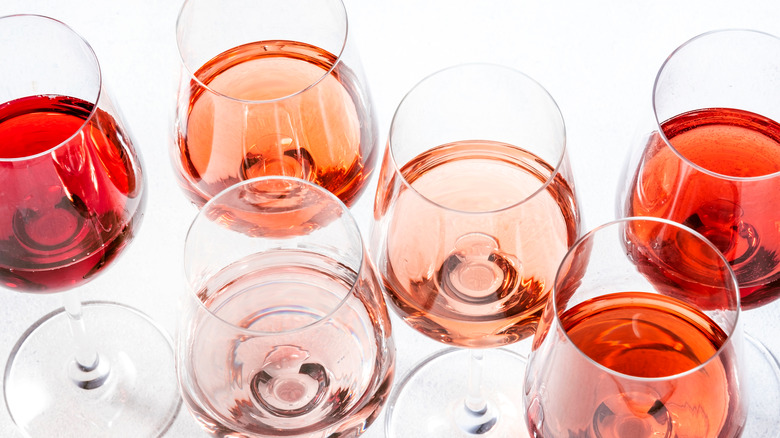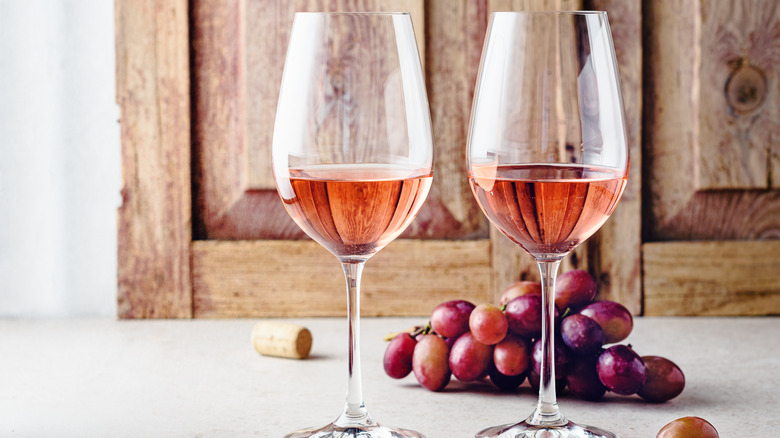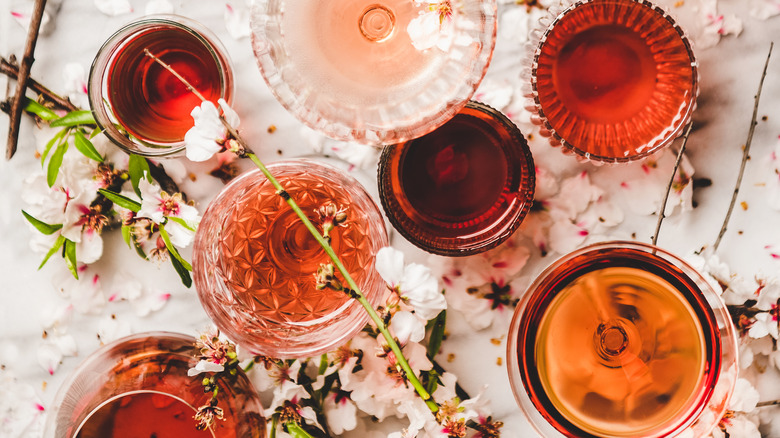What Kind Of Wine Is Rosé?
Dedicated wine aficionados and regular folks can both appreciate a good glass of wine now and then — but good can mean different things to different people. Even without a background in wine, you probably know that there are many different types of wine that all pair best with different flavors or dishes. At the most basic level, there are two wine varieties: red and white. The practice of wine making has been happening for thousands of years, as National Geographic reports.
However, it turns out that red and white wine is a dated dichotomy because there's a new-ish kid on the block: rosé. For starters, it's the pink one, but the truth is a bit more complicated. Rosé comes in all sorts of hues and mediums, like frosé slushies and even gummy bears, though it's just as refreshing when it been chilled and sipped right out of a glass. Besides the fact that it's delicious, what exactly is there to learn about rosé?
The grapes that go into rosé
As per Intovino, Chardonnay grapes make both Chardonnay and Chablis wine (plus a bunch of others). A wine can be made from one type of grape, in which case it would be called a single varietal, or several to make what is usually called a blend. Further complicating things is the fact that the juice of all grapes runs relatively clear.
Of course, we don't really have clear wine. The color of vino comes from the fermentation process, where the juice sits with the grape skins that are responsible for imparting the final color, according to Wine Folly.
There's a common misconception that rosé is just a mixture of red and white wine, but it's really all about that fermentation process. Pink wines like rosé are the result of the skins fermenting for just a short amount of time, meaning that the red pigment isn't as deep as what you may seen in a more classic red wine. For example, the grapes used to make a deep red pinot noir can also be part of the mix for red, white and even rosé wines, per Wine Folly.
Rosé gets versatile
Like with a red or white wine, rosé can be a single varietal or a blend of different grapes. What's more, the type of grape used will influence the final flavor of a wine. Since rosé is known to be an easy sipping wine, it's an especially popular choice, though Vice argues that the "rosé all day" mentality sometimes skirts too close to overindulgence. Either way, rosé is having a moment in large part because of its versatility and variety. Some rosé is ultra sweet and pairs very nicely with spicy foods like curry, while others are light and dry.
One of the main benefits of rosé is that it solves the age-old dilemma of what wine should you pair with your surf 'n' turf. Traditionally, you would want a red to complement the steak, but a white for the seafood. For someone who wants just a single glass in that situation, rosé is the golden ticket.


